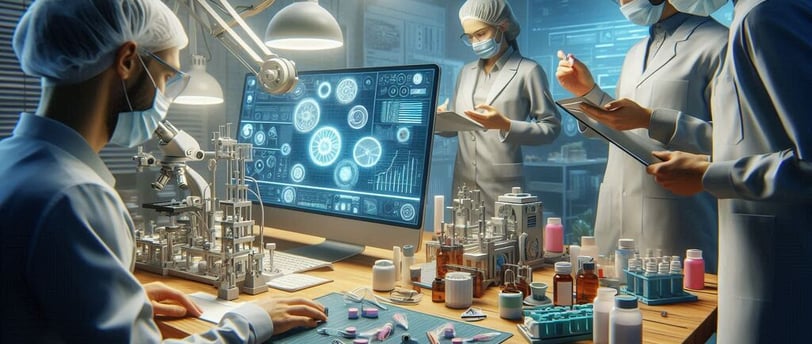Prototype Samples
High-quality prototypes for effective product development.
11/15/20243 min read


Prototype Samples: High-Quality Prototypes for Effective Product Development
In today’s fast-paced, innovation-driven world, having a great idea is only the beginning. Transforming that idea into a successful product requires a strategic process—and at the heart of it lies high-quality prototype samples. These prototypes are the bridge between concept and reality, providing a tangible way to test, refine, and perfect a product before it hits the market.
Why Are Prototypes Crucial in Product Development?
Creating a product without a prototype is like building a house without a blueprint. High-quality prototypes serve multiple purposes that are critical for the success of your project:
Validation of Ideas: They help confirm whether your concept works as intended.
Cost-Effectiveness: Identifying flaws early avoids costly production errors later.
Stakeholder Communication: A physical prototype can communicate your vision better than any diagram or description.
Testing and Feedback: Allows for rigorous testing and customer feedback to refine the product further.
Real-Life Example:
Think about Apple. The sleek designs of their devices go through countless prototypes before the final product is unveiled. This meticulous prototyping ensures the end product meets functionality, design, and quality standards.
Types of Prototype Samples for Product Development
Understanding which prototype suits your product's stage is essential. Here are the main types:
1. Proof-of-Concept Prototypes
These are basic models designed to test the feasibility of your idea. They focus on functionality rather than aesthetics.
Example: A simple circuit board to test a new tech gadget.
2. Functional Prototypes
These mimic the working of the final product but might not use the same materials. They're ideal for identifying performance issues.
Example: A 3D-printed drone that replicates flight dynamics.
3. Visual Prototypes
Focused on the product's appearance, these prototypes help stakeholders and customers visualize the end result.
Example: A cosmetic bottle prototype to determine branding placement and ergonomics.
Benefits of High-Quality Prototypes
Investing in well-crafted prototypes offers more than just a glimpse of your product; it propels your project forward.
1. Accelerated Development Cycles
With a tangible model, teams can iterate faster, saving valuable time. For startups especially, this speed can mean beating competitors to market.
2. Improved Collaboration
Designers, engineers, and marketers can align their goals and communicate more effectively when they have a prototype in hand.
3. Customer-Centric Design
By involving potential users during prototype testing, you ensure the final product meets market expectations.
Stat to Consider: According to a report by McKinsey, customer-centric products have a 20% higher success rate in the market.
How to Create High-Quality Prototype Samples
1. Choose the Right Technology
Thanks to advancements like 3D printing, CNC machining, and injection molding, creating prototypes has become more accessible. Each method has its pros and cons, so select based on your product's complexity and material needs.
2. Partner with Experts
Prototyping firms specialize in delivering high-quality results. Collaborating with them ensures precision and saves time.
Example: Companies like Protolabs offer rapid prototyping with exceptional quality, even for tight deadlines.
3. Iterate Based on Feedback
Prototyping is rarely a one-and-done process. Use every iteration to improve functionality, aesthetics, and user experience.
Common Mistakes to Avoid in Prototyping
Skipping the Testing Phase: Always test for usability and durability.
Overcomplicating Early Prototypes: Keep the initial models simple and cost-effective.
Neglecting Feedback: User insights are gold—don’t ignore them.
FAQs on Prototype Samples
Q: How much should I budget for prototypes?
A: Costs vary based on complexity and materials. Simple prototypes can start at a few hundred dollars, while advanced models may reach thousands.
Q: Can I use digital prototypes instead of physical ones?
A: Digital prototypes (like CAD models) are great for visualizing ideas, but physical prototypes offer better insight into functionality and user interaction.
Conclusion: Take Your Product Development to the Next Level
Investing in high-quality prototype samples is an essential step in transforming your ideas into reality. Whether you’re refining a new gadget, designing packaging, or testing a mechanical device, prototypes are your roadmap to success.
